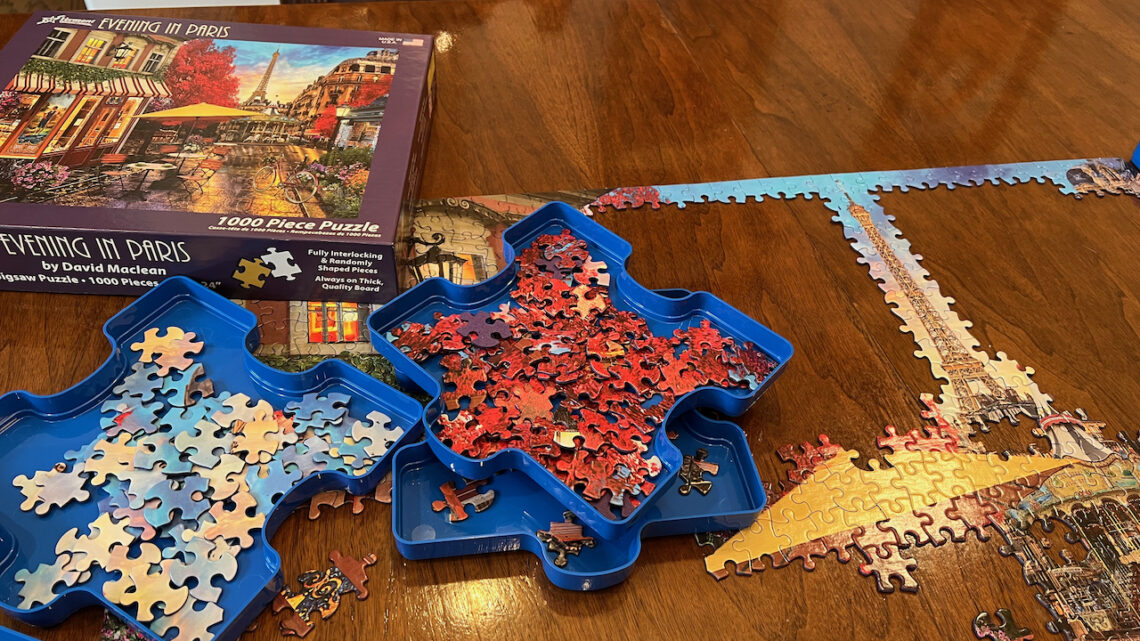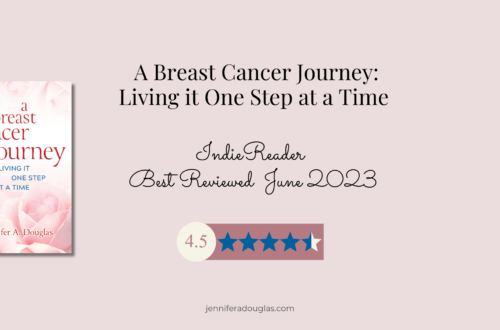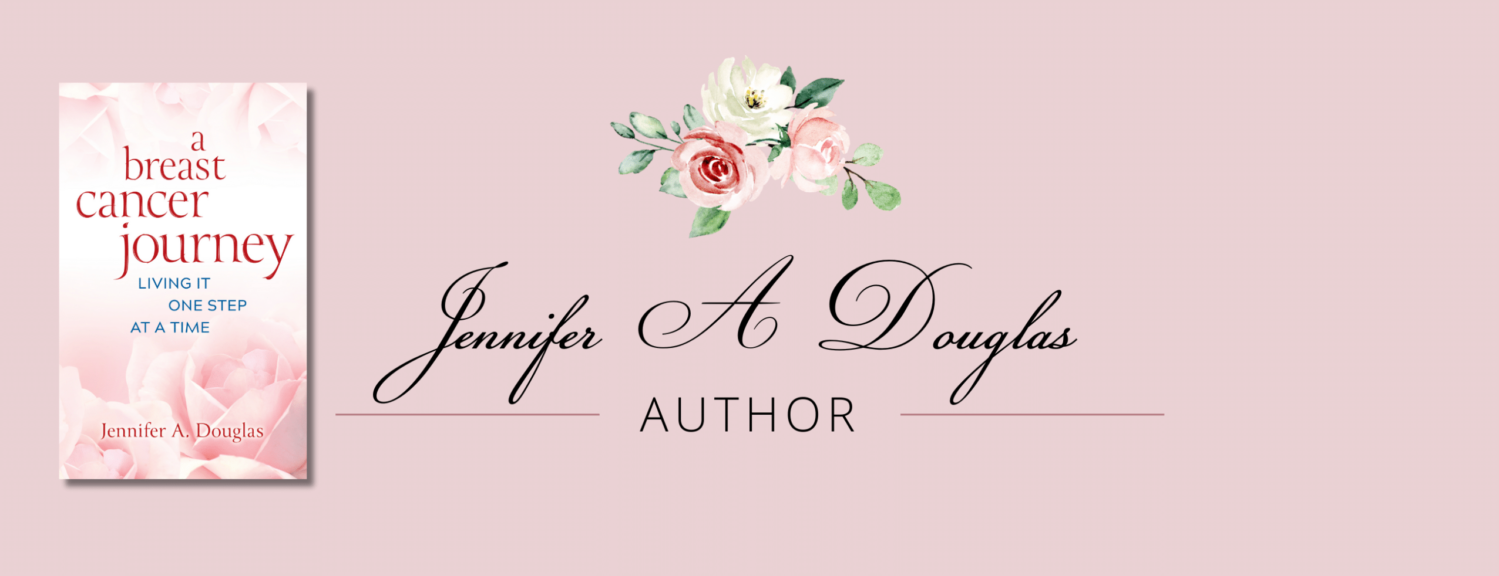
Decision-Making During Breast Cancer Treatment: Solving A Puzzle I Never Wanted To Do
Before breast cancer, the puzzle of my life seemed to be manageable. I knew where all the pieces were, and I felt (mostly) capable of deciding which part to tackle next. However, after diagnosis, I was faced with a seemingly unsolvable puzzle. Everything was mixed up, and I had decisions that needed to be made. I never wanted to do this puzzle in the first place, yet I was with the pieces of my life in a jumble.
- Who should my surgeon be?
- Which surgery should I choose?
- What about radiation?
- Do I take the tamoxifen or not?
These are just a few of the decisions I faced during my breast cancer treatment. Decision-making was so difficult, especially at the beginning. I was just learning about the language of breast cancer, and I needed to make treatment choices without feeling like I had all the answers. There was a weight to the choices. What if I made the wrong one?
It was overwhelming, and I remember feeling as if my brain wouldn’t shut down as I processed through each decision.
Every time I tried to sort all the decisions, I would get frustrated. There were too many pieces in play.
Throughout the last few years, I have written several posts on different aspects of my decision-making as I walked through treatment. You may face all of these decisions or different ones. At the bottom of this post, I will collect all of my decision-making posts so that they are easy to find.
Putting Things Together, One Piece at a Time
As I brainstormed for this post, I struggled to develop a way to describe the decision-making process clearly and concretely. I began with a list. That was too simplistic. Then, I decided to make a flow chart. If this, then move to that step. It got too complicated too fast. I had to add multiple pages because there were too many steps in the decision tree.
I closed the notebook and paced in contemplation. Walking always helped me when I faced a decision during cancer, so maybe it could help me decide how to frame this post.
The unfinished Eiffel Tower caught my eye, so I paused my pacing. Surrounding the tower were tiny pieces of unrelated colors. Bushes, flowers, leaves, pavement, and horses mingled in their cardboard containers. I sat down, uncertain where to find the answers. Then, I spotted it. I picked up the final piece I needed to complete the tower. It appeared out of a bin of hundreds of pieces, and I knew exactly where it went.

I spent the next half an hour sifting, sorting, and placing a few more pieces of the puzzle. I was nowhere near completion, but I felt a tiny burst of satisfaction each time something fit. Then I realized this unfinished puzzle, with its pieces all over the place, was an excellent visual for the confusion I felt during parts of my decision-making.
Cancer took the puzzle of my life and dumped it out on the table. My life had once made sense, but now it was mixed up and unsorted. When I began to assemble the puzzle again, I didn’t have all the pieces anymore. My puzzle was incomplete. Off I went to each appointment, hoping for more clarity along the way. If I were fortunate, I would get a few more pieces to tote back home and put them back into place. Imaging, biopsies, genetic testing, surgery, oncology, and radiation were critical pieces of my treatment plan.
Puzzling Principles That May Apply to Cancer Decision-Making
- You need to have all the pieces to be successful
- Everyone’s puzzle is different
- Some puzzles have more pieces than others
- The difficulty of each puzzle can vary greatly
- Even when you get the edges finished, there are still hours of work to go
- An effective teammate makes puzzling more productive
- Caution: some teammates might make puzzling frustrating.
- Take it one piece at a time
- Try turning a piece around to see if it fits a different way
- Take breaks along the way
- Clarity can come when you least expect it
- Everyone has a slightly different approach to puzzling
- It takes time to see patterns in the pieces
- Sometimes, you get to the end and realize that pieces are missing
- Puzzles don’t have a time limit
The puzzle I’m working on right now is a beautiful street scene in Paris. In a corner is a bicycle sitting next to a flower market. I put the bike together quickly, but then I was stumped. I stared at the scene and then noticed a reflection of the bicycle glistening in the pavement. Suddenly, I knew what to look for in the piles of pieces and quickly assembled that section. Finally, I had enough information to know what kind of pieces to look for. Things moved quickly after that.

I’m most successful when I work on one section at a time. I also tend to work better when I stare at the pieces rather than the picture on the box. On the other hand, my husband prefers to stare at the box picture with one piece in hand until he can figure out exactly where it goes. Which method is better? Neither. They both work.
Everyone’s Process is Different- Learn What Works for You and Then Repeat
When I walked out from an appointment, I realized that I needed time to process the new information before sharing my thoughts with others. Once I realized that I began to schedule buffer time after appointments. Before I shared it with others, I needed the time in my calendar to process the information myself. I would often make the next decision and then send out my treatment updates. This method enabled me to own my decision confidently before sharing it with others.
My Process looks like this:
- Pre-Appointment research: Who am I seeing, what will we discuss, do I have any questions going in?
- Appointment time: Ask questions and determine what the next steps are. Ask the doctor what his treatment preference is given my particular situation. Are there other things I need to schedule or book before treatment?
- After Appointment: Buffer time to process after the appointment.
- Discuss with my husband
- Do more research about my options.
- Walk and think
- Make decision
- Share with my extended support network.
Maybe you like sharing your treatment decisions in real-time and getting lots of opinions before you make a decision. If that works for you as you’re making the decisions, then great! If not, then change your process.
If you are frustrated with your process, then change it. Sometimes I get to a place in my puzzle where I need to stop and look at the picture on the box. I’m too close to the situation and cannot see where I need to go.
Decision-making is not clear-cut and straightforward, which is why I abandoned the strict flow chart image. There is no one right way to approach decision-making. Puzzling seems to encapsulate the complexity of the choices we make.
A Collection of Decision-Making posts:
Decision-making is complicated during cancer treatment. I hope that the image of an unfinished puzzle can help you as you approach whatever phase you’re in.
I wrote several posts about the decision-making I did throughout diagnosis and treatment. I’ve collected them above for you to read how I walked through each phase of decision-making. None of these decisions were easy to make at the time because I was also dealing with emotions and anxiety.
I hope these posts help you sort through the decision-making puzzle you’re facing right now. As I approached each decision, I relied heavily on the expertise of my medical team. They had the expertise I needed to make these choices a little easier. But, ultimately, I needed to take their perspectives, merge them with mine, and find the option that I could live with.
Jennifer Douglas
Jennifer is the author of "A Breast Cancer Journey: Living it One Step at a Time," breast cancer survivor, and patient advocate. Her book, published in 2023 by Bold Story Press, is an encouraging guide for breast cancer patients. It contains first-hand information, organized by topics, to help readers navigate the diagnosis, treatment, and recovery from breast cancer. Her writing emphasizes emotional, mental, and physical well-being along with empowered decision-making.


You May Also Like

Skincare During Radiation Treatment
December 8, 2020
How to Understand Your Mammogram Results
July 31, 2020
